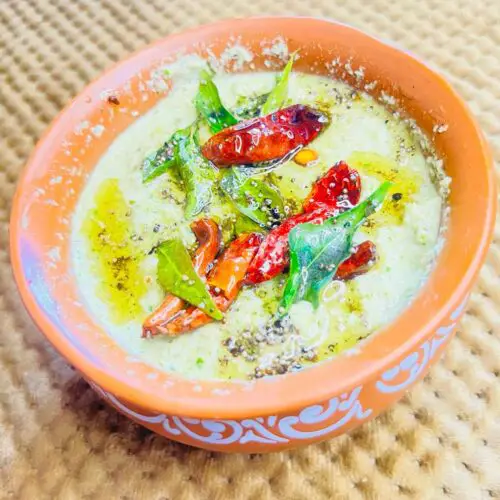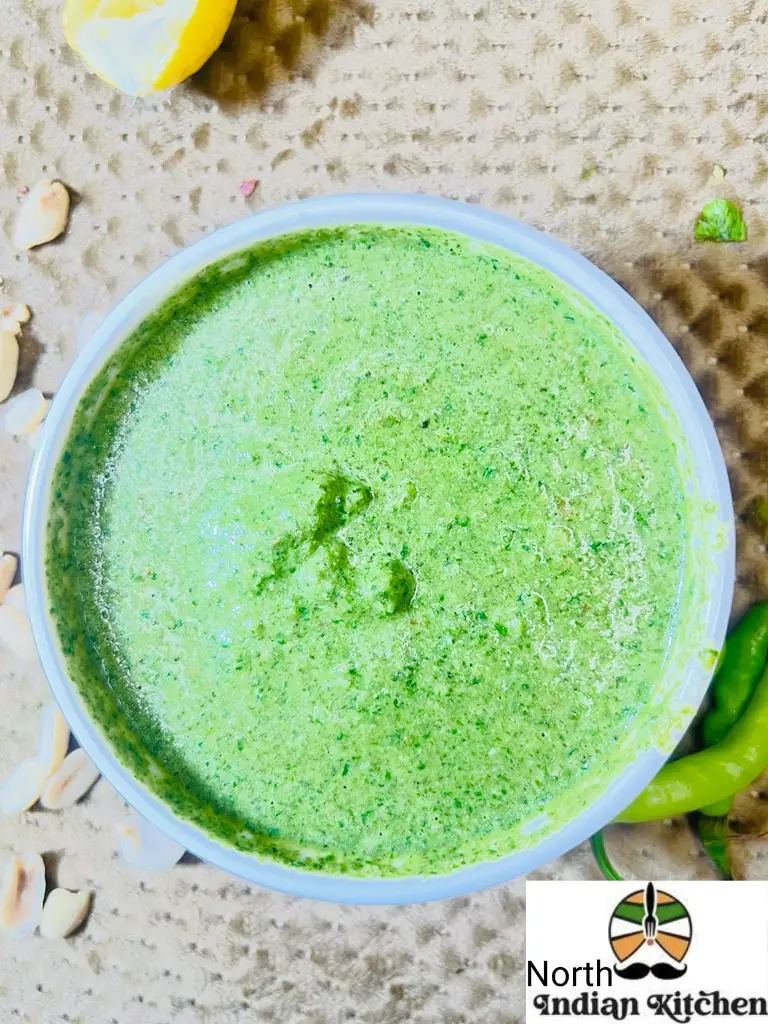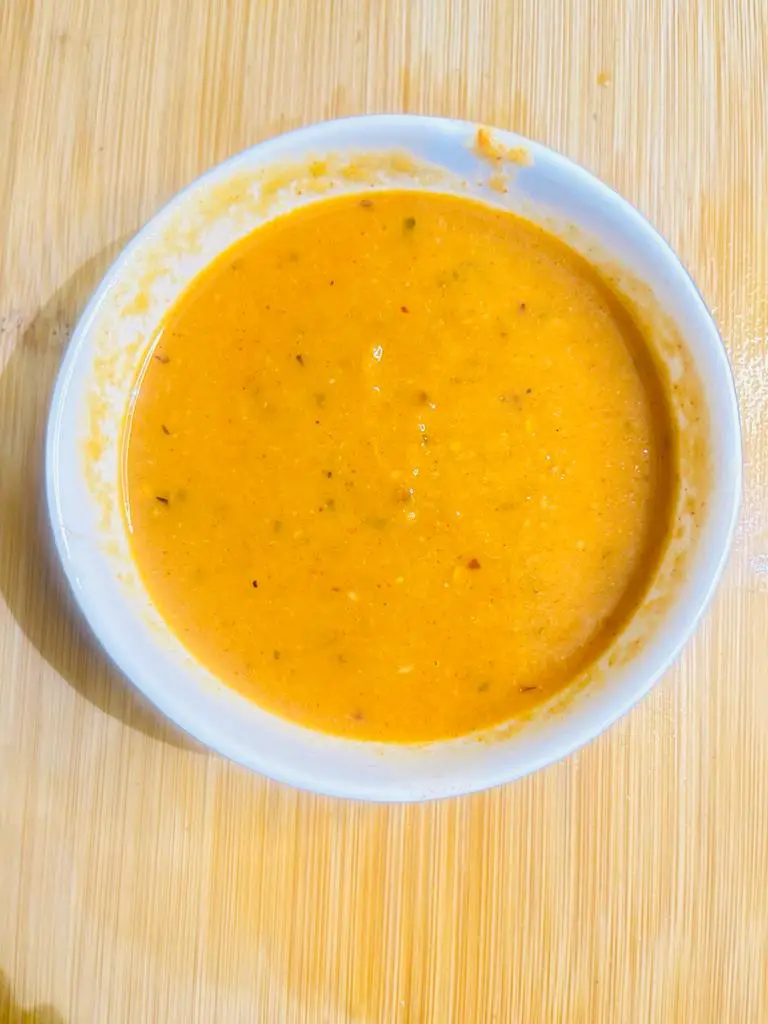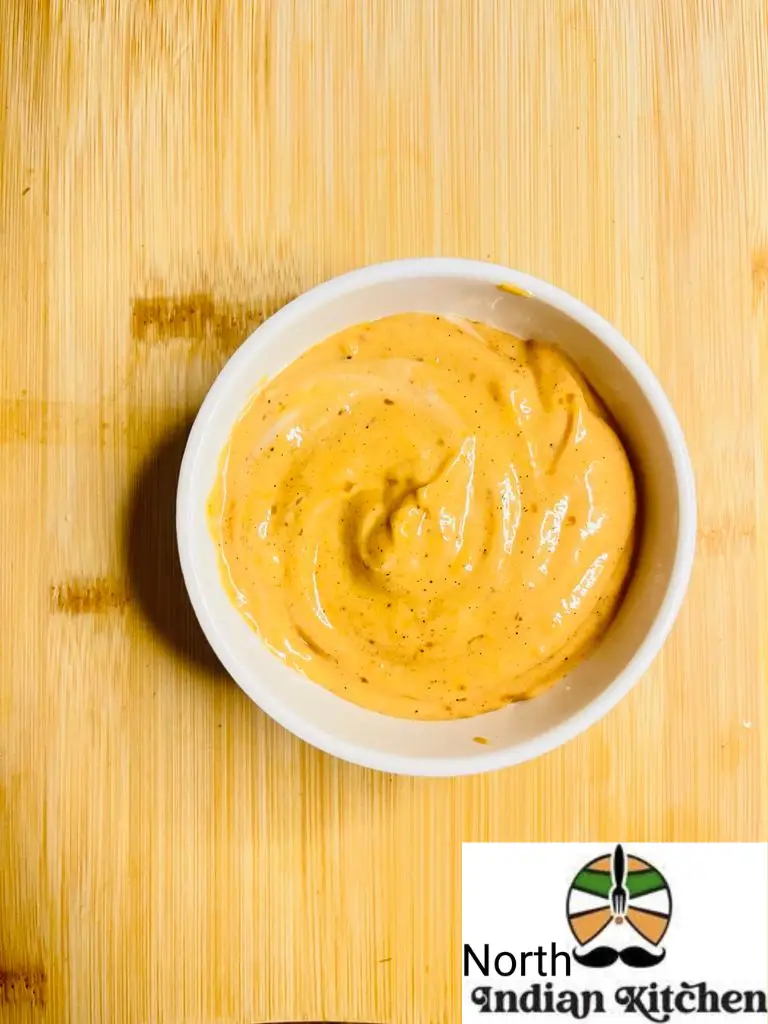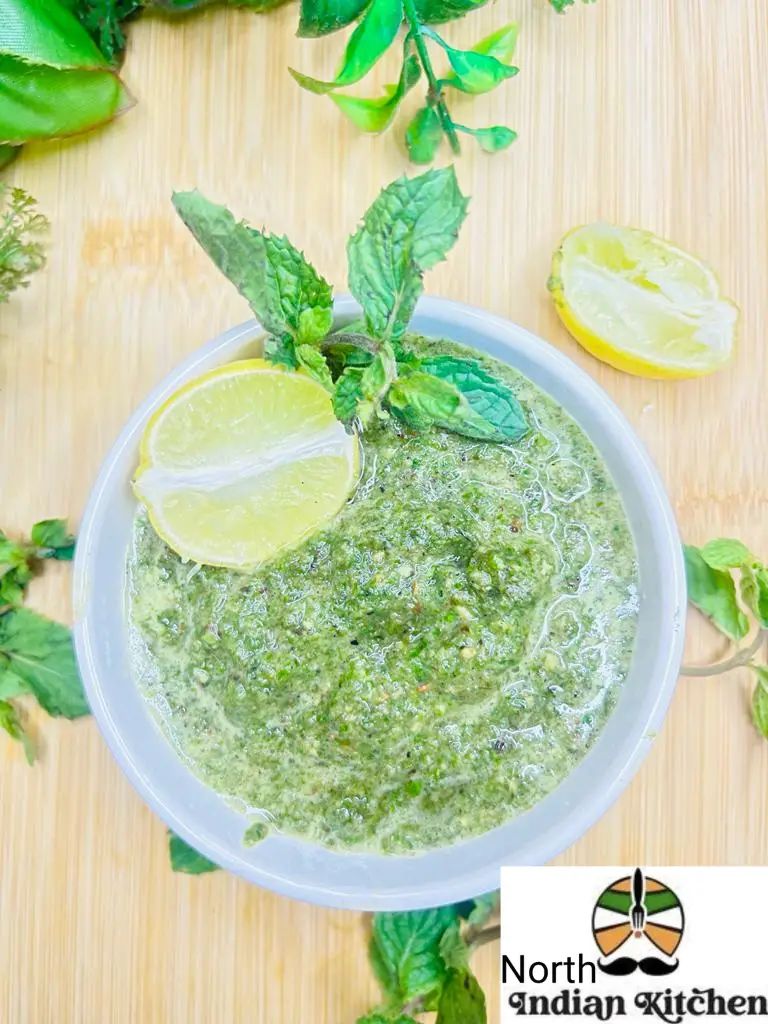Easy Coconut Chutney South Indian Style | Homemade Peanut Coconut Chutney
When it comes to Indian cuisine, the array of flavors, aromas, and textures is truly captivating. One such culinary delight that adds a tropical twist to your meals is the beloved Coconut Chutney, a coconut-based condiment that boasts a unique blend of sweet, tangy, and spicy flavors. Let’s dive into the origins, ingredients, preparation, variations, and ways to enjoy this versatile chutney.
Coconut chutney is best to serve as a side dish with idli, dosa or uttpam. So yummy chutney which doubles the taste of other South Indian dishes.
Nariyal chutney, also known as coconut chutney, has its roots deeply embedded in the culinary tapestry of South India. With coconut trees abundant in the region, it’s no wonder that this versatile ingredient found its way into various dishes, including chutneys. Over time, the popularity of coconut chutney spread across the country and even internationally, becoming a staple accompaniment in Indian cuisine.
Preparation of Coconut Chutney
- Initially place a pan on medium-high flame and add 2 tablespoon oil & 1 cup raw peanuts. Cook it gets until fully roasted. It will enhance the chutney’s flavor.
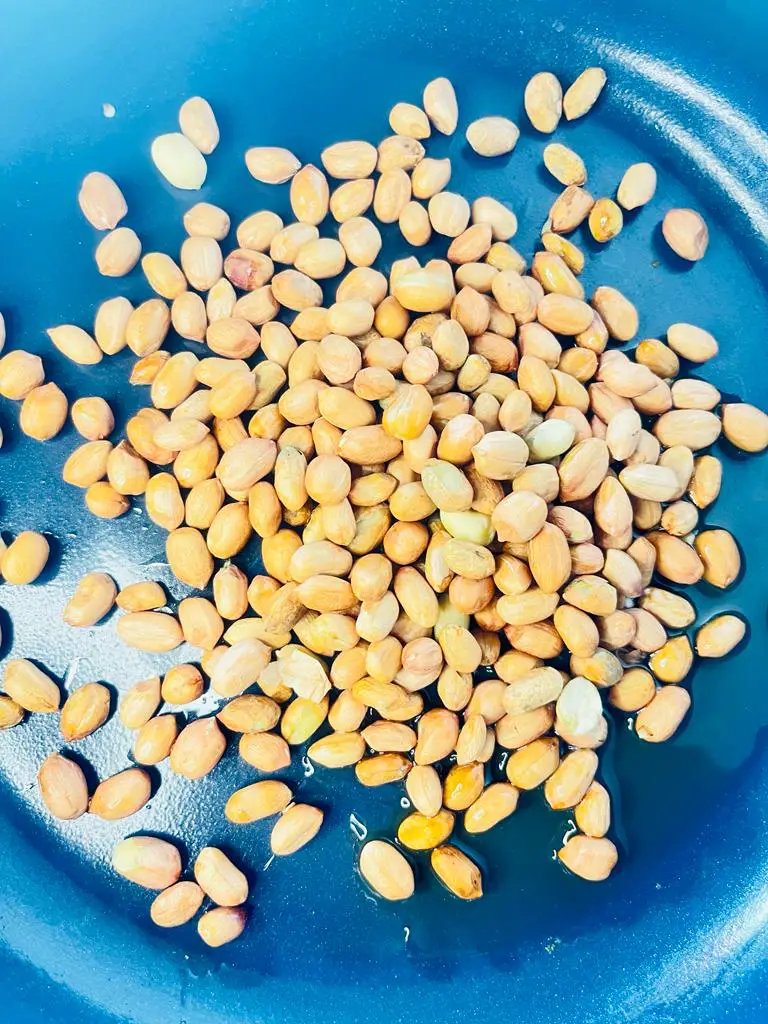
- Now add 4-5 green chili slits.
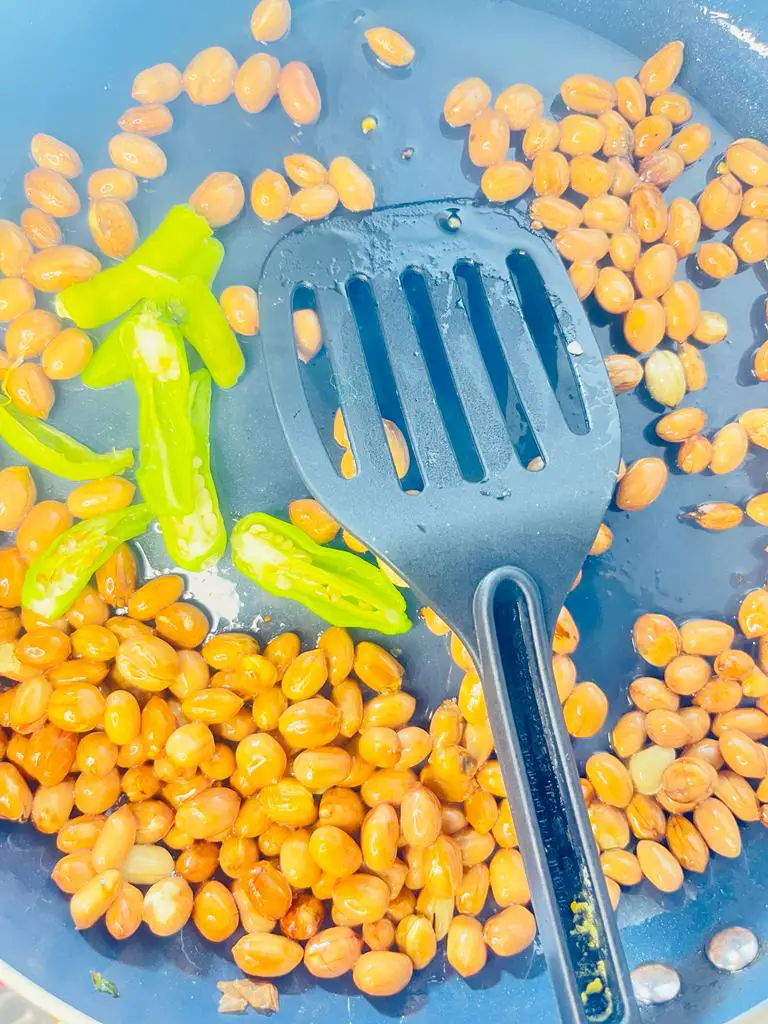
- Append 10-12 fresh curry leaves.
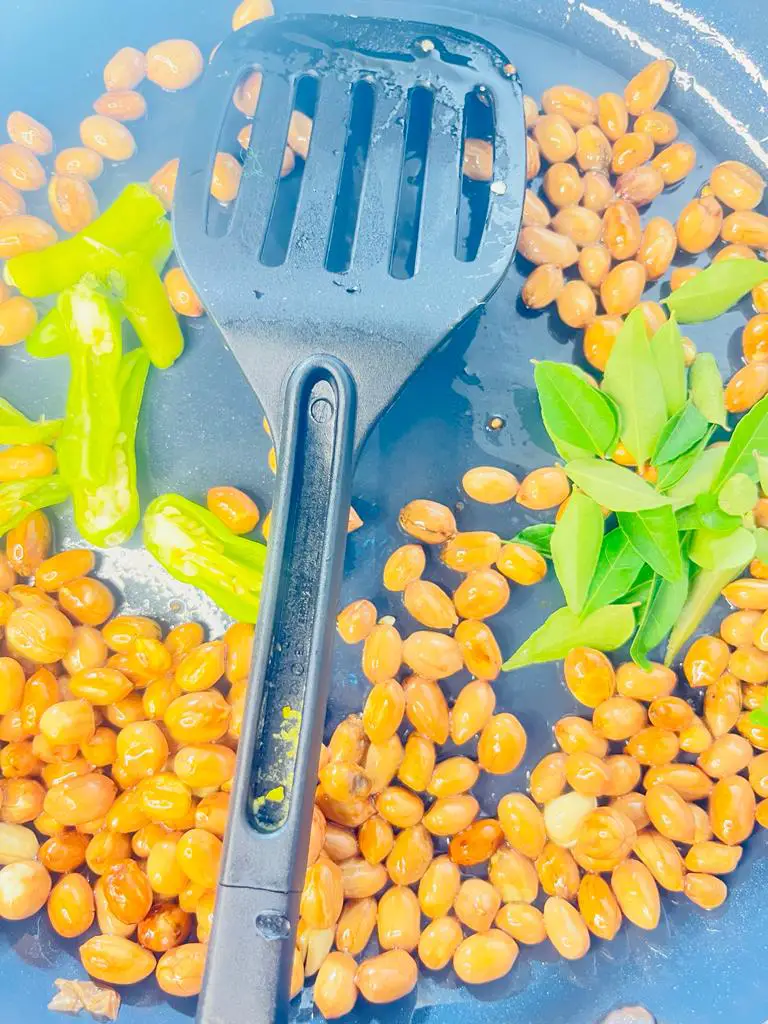
- Add 2-3 tablespoons fresh mint leaves.
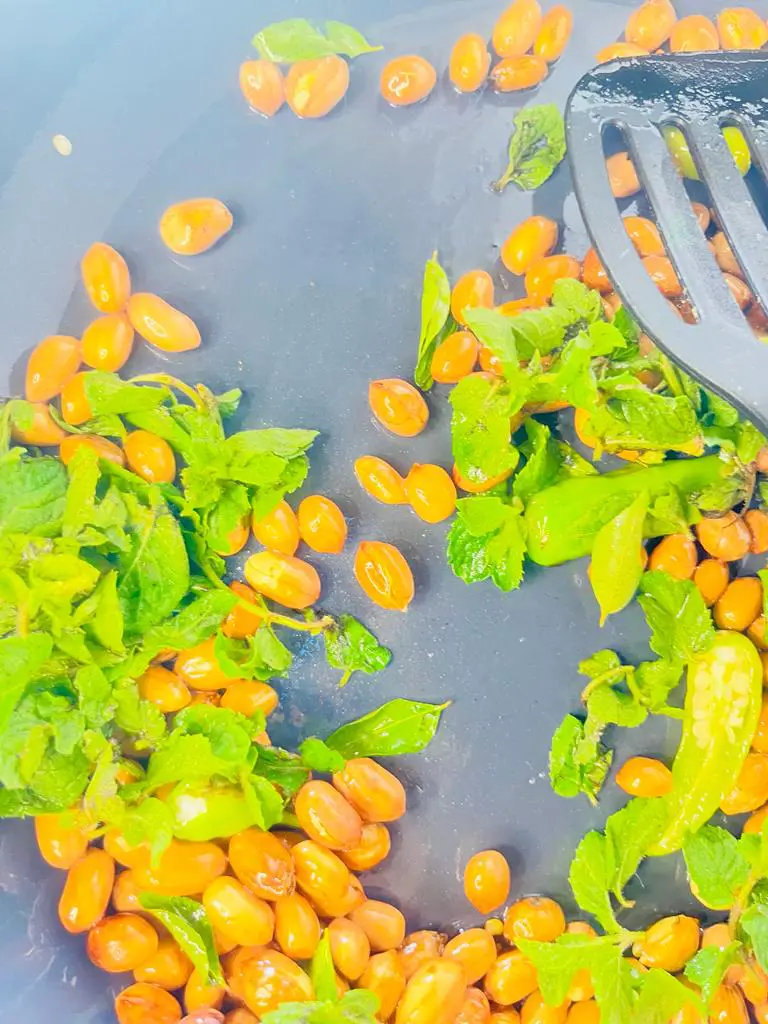
- Add 1-inch ginger and cook for a while.
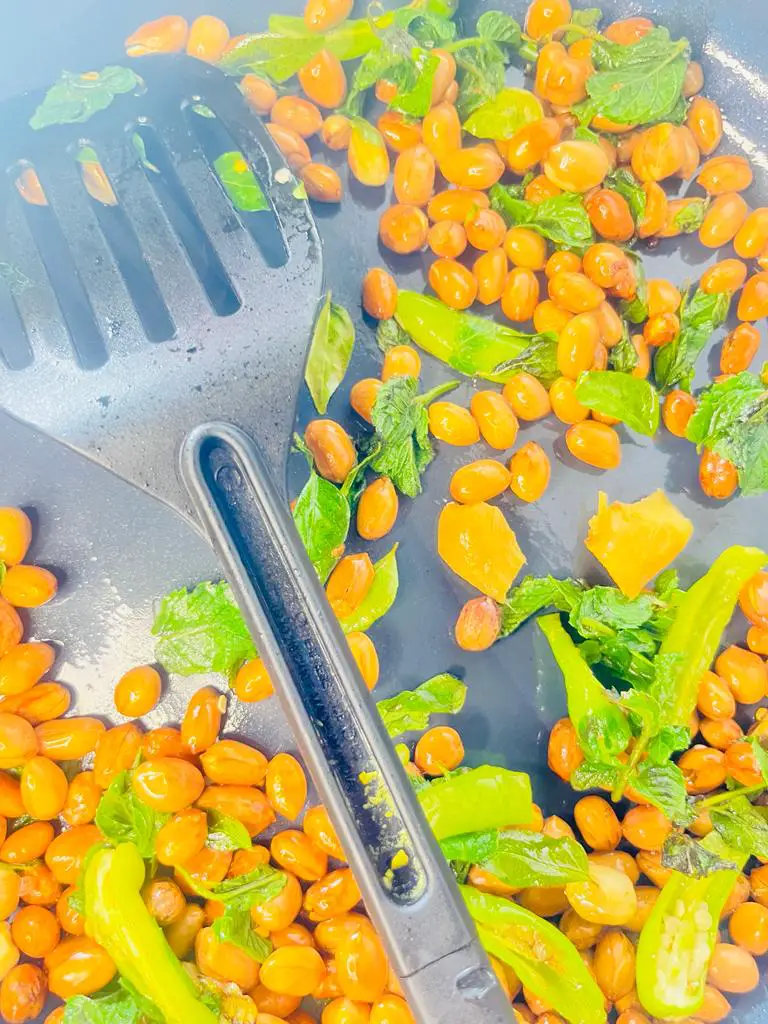
- Now Add 2-3 tablespoons toor dal. You can use roasted dal also. It will help in binding the chutney so cook it a while.
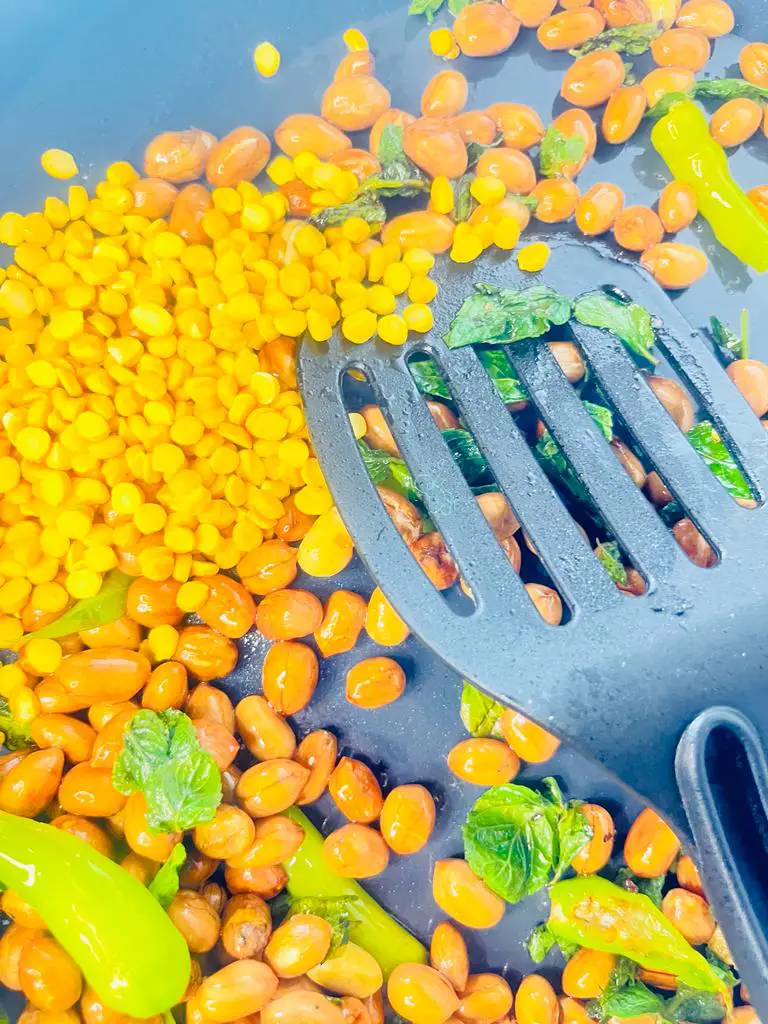
- Pour 2 tablespoons taramind pulp in it. It will give a zesty flavor to chutney.
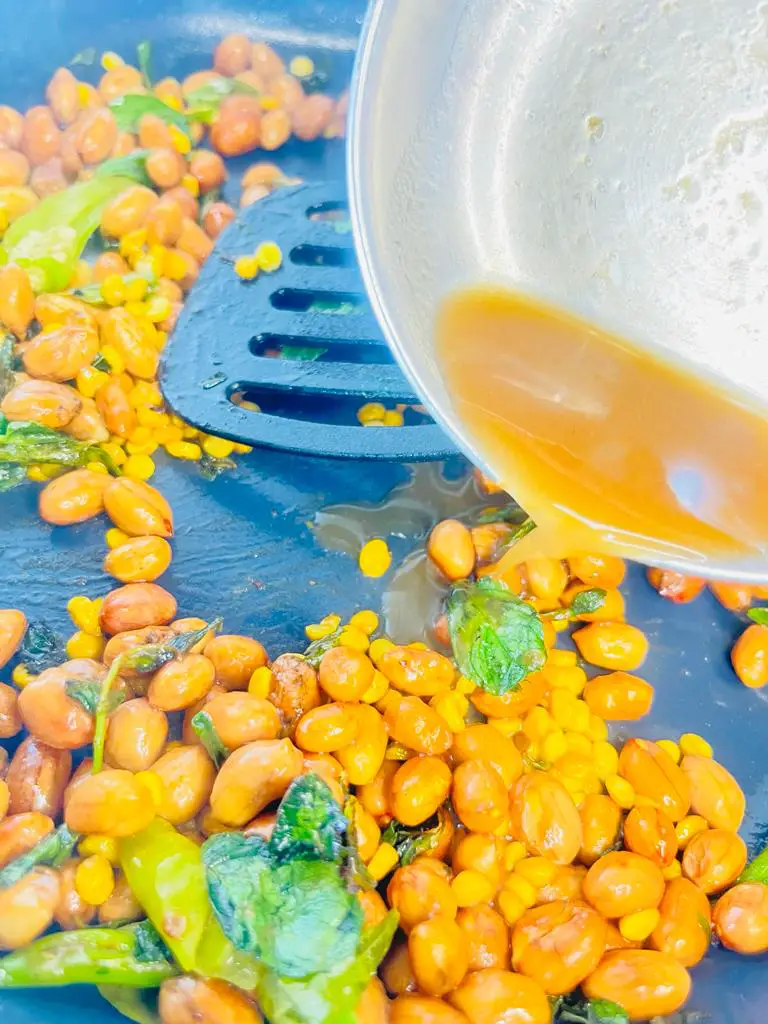
- Lastly append 1 bowl cubed coconut pieces. Don’t roast only cook the coconut.
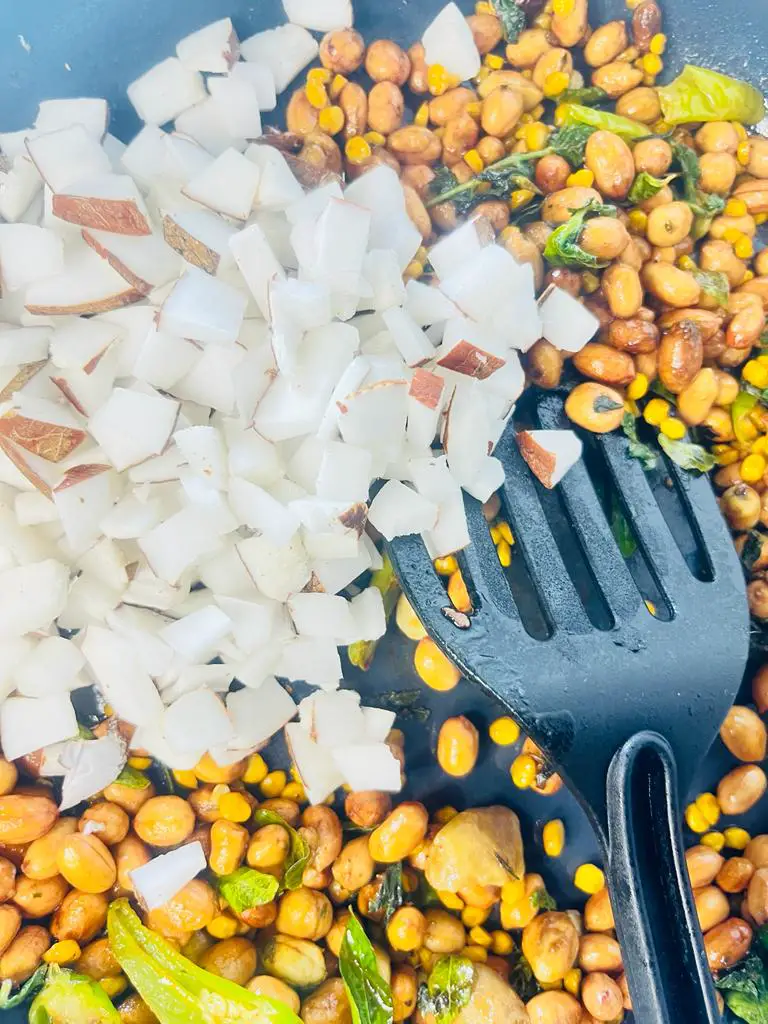
- Afterwards when it is cooked then then transfer the mixture to blender jar.
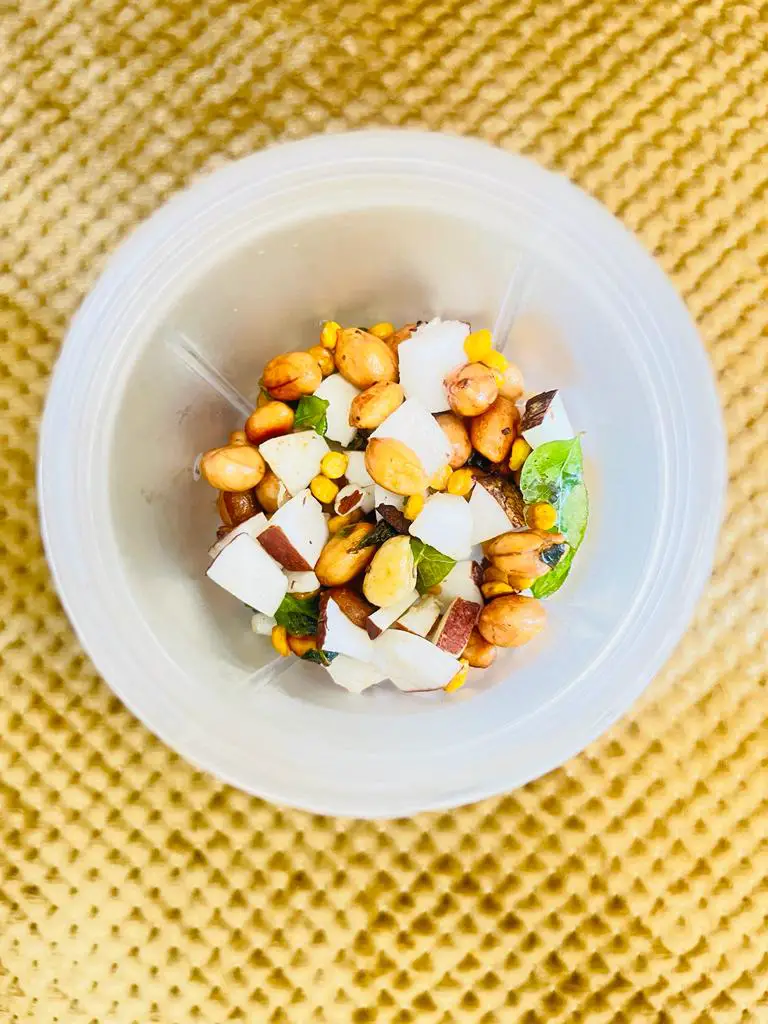
- On top of it add handful fresh coriander leaves and salt as per taste.
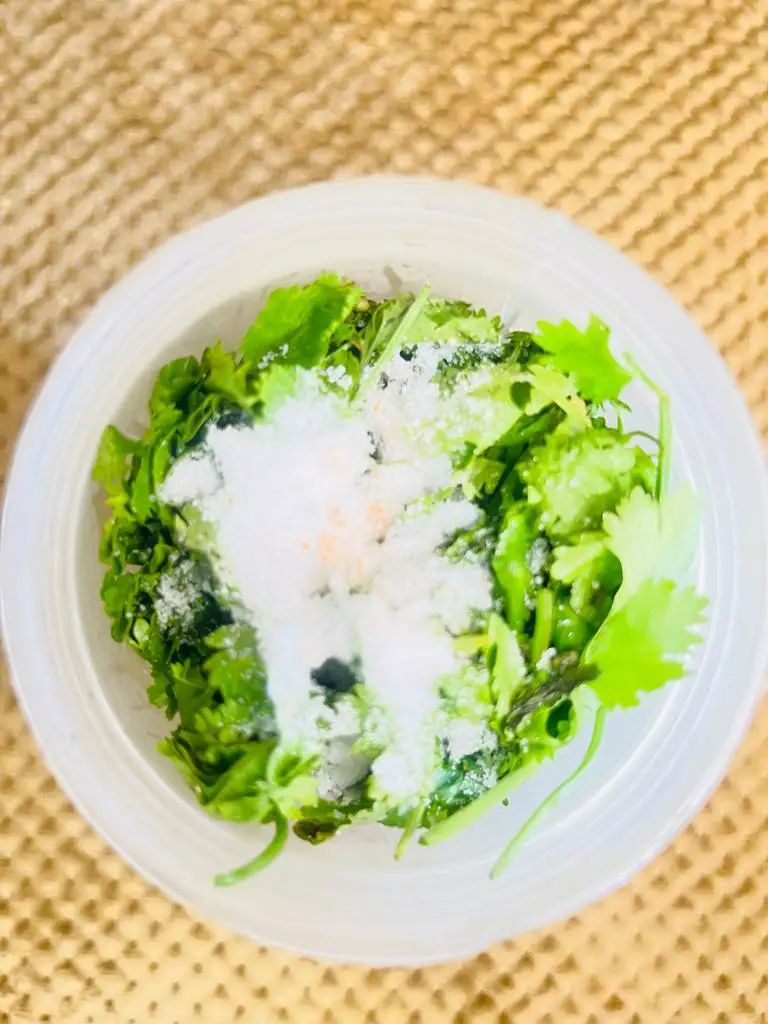
- Pour 1cup water in it. It’ll help in easy blending the mixture.
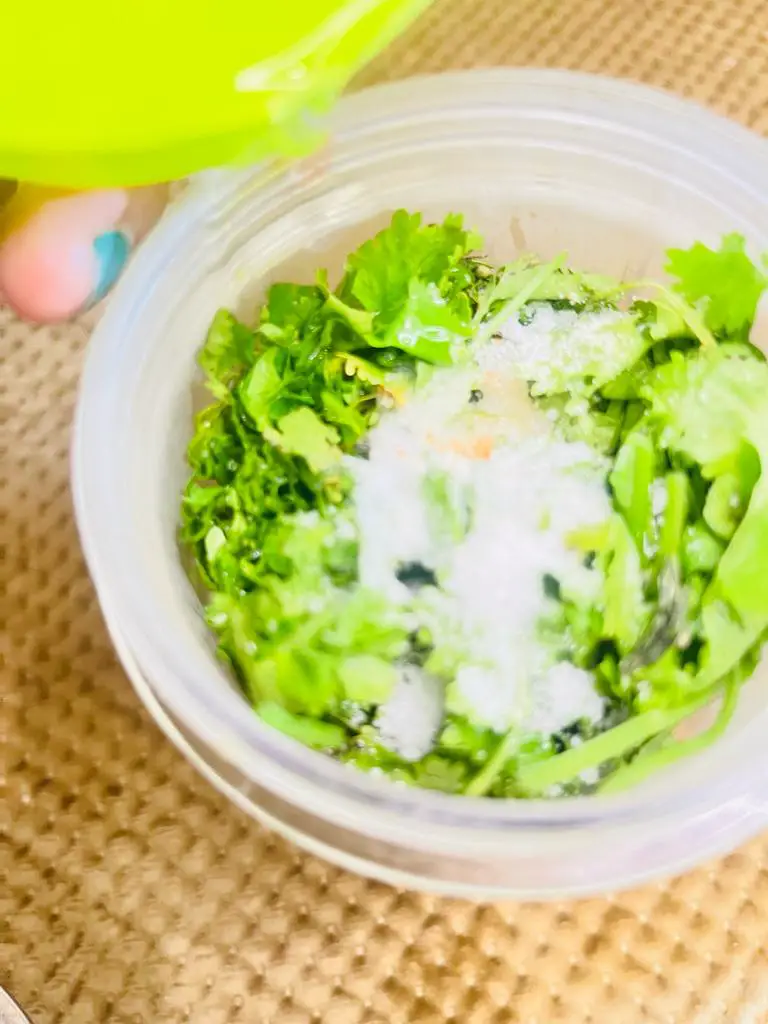
- Blend it until a smooth finished chutney gets ready. Transfer it to a bowl.
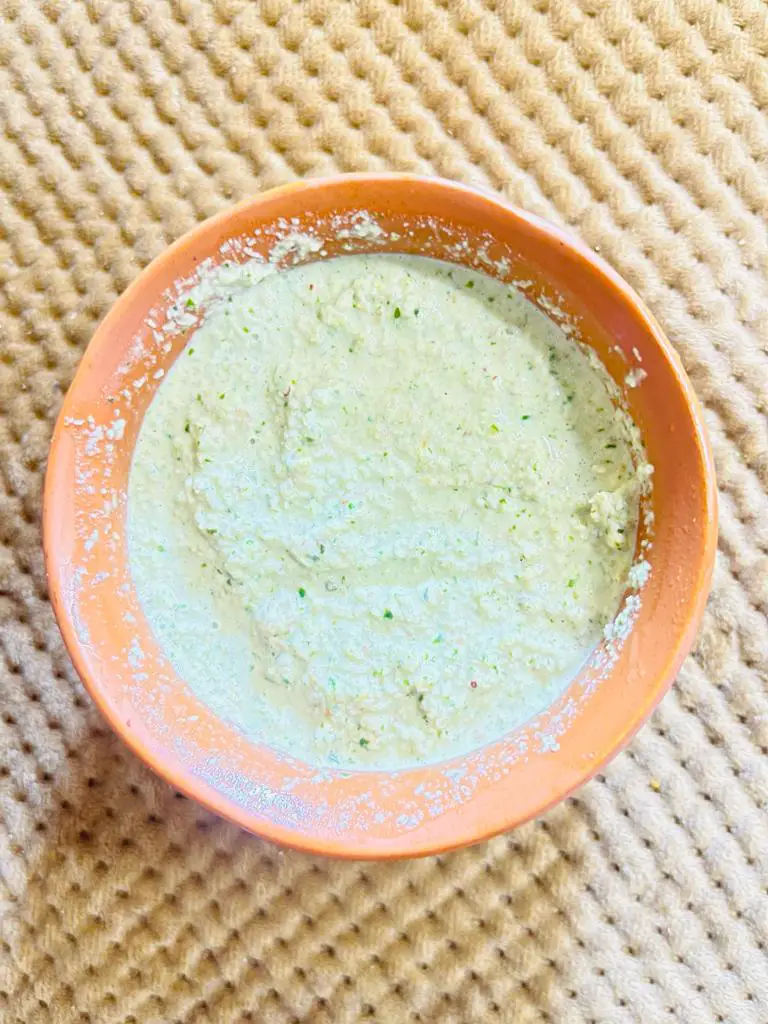
Tempering
- Heat 2 tablespoons oil in a pan. Add 1 teaspoon mustard seeds and allow them to splutter.
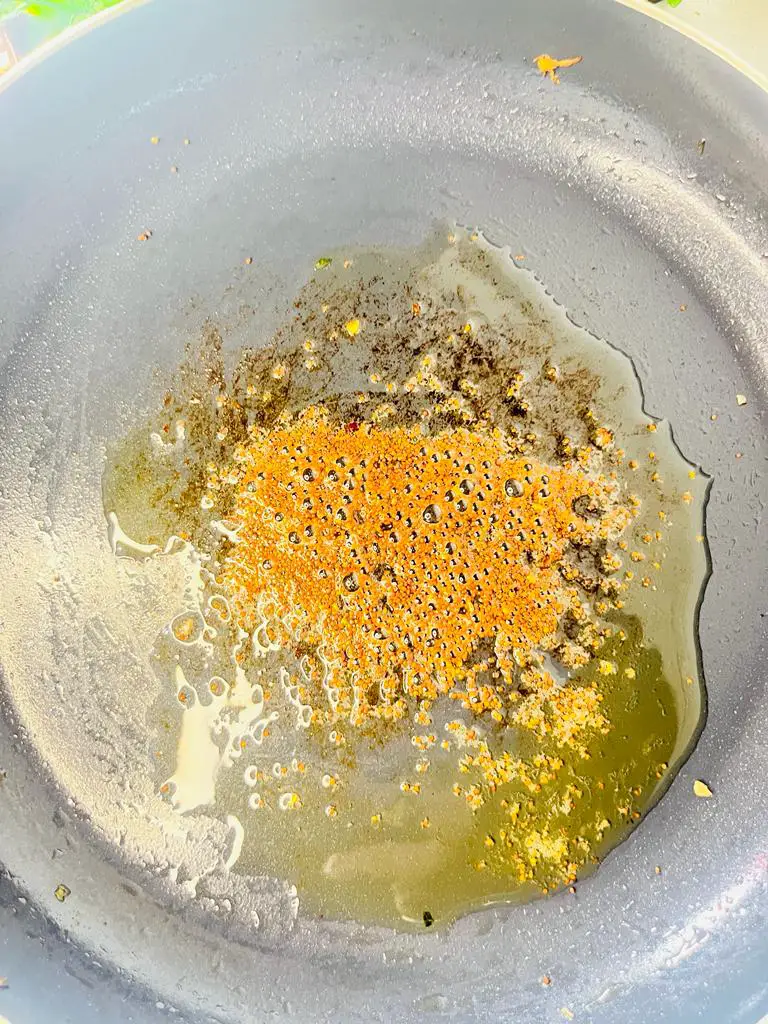
- Add 5-6 curry leaves & 2-3 dry red chilies. Switch off the flame.
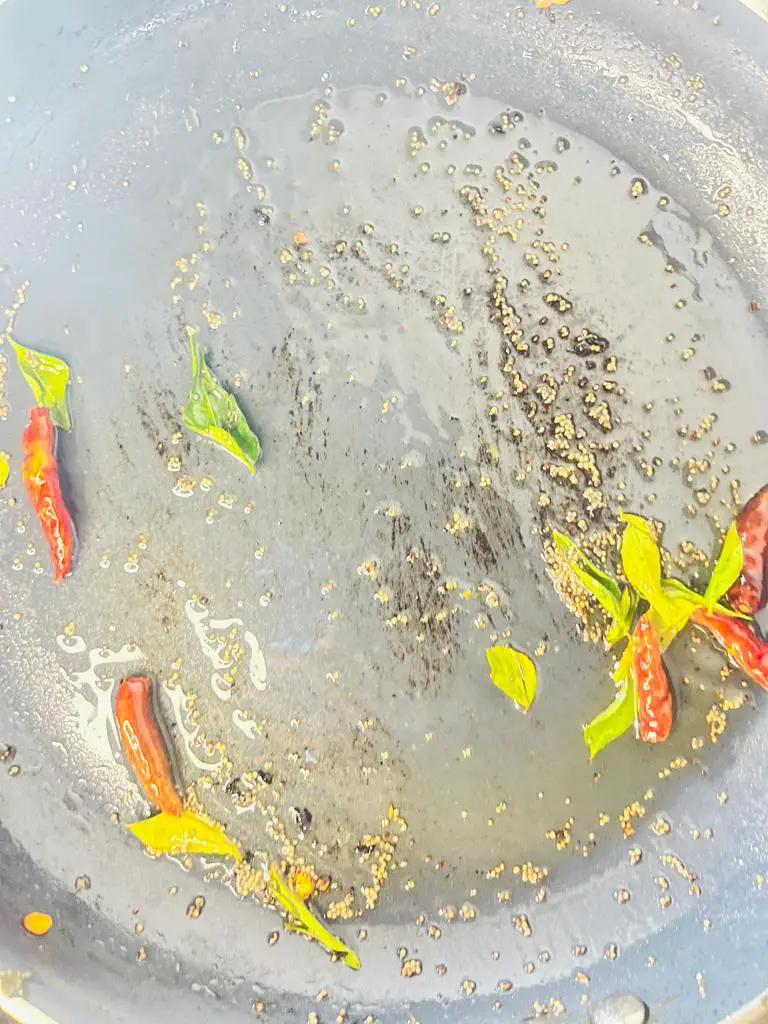
- Pour the tempering over the prepared coconut chutney.
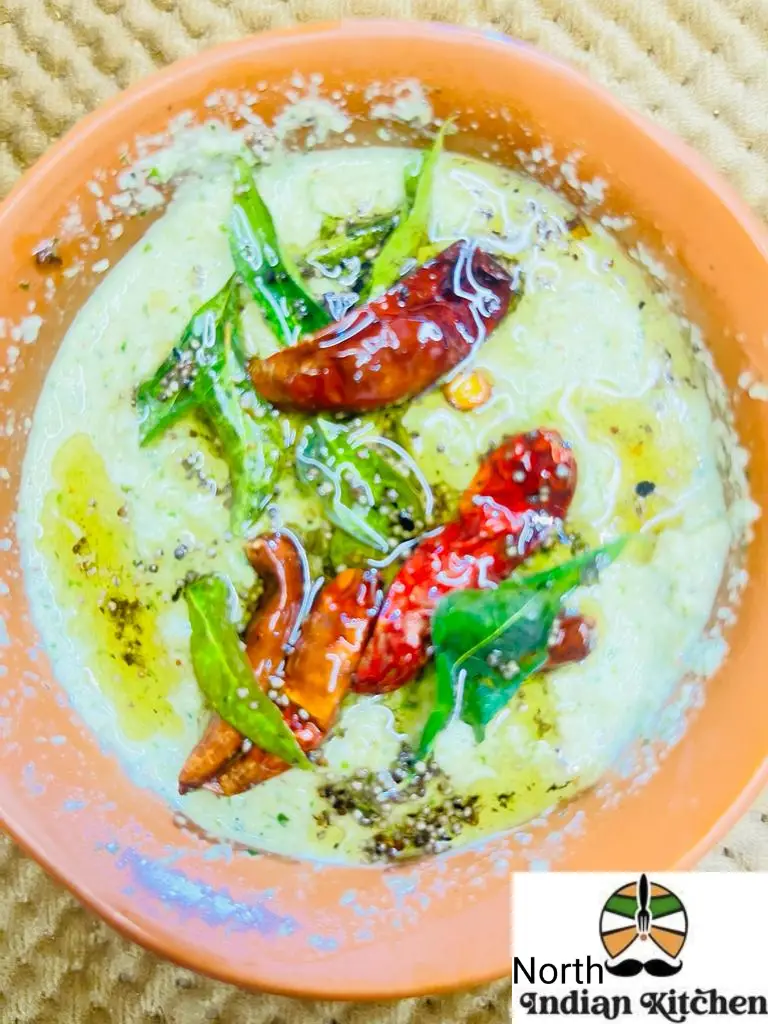
Expert Tips
- Fresh Coconut Is Key: Opt for fresh grated coconut whenever possible. Fresh coconut not only enhances the flavor but also contributes to the creamy texture that defines a good coconut chutney.
- Balance Flavors: Achieve the ideal balance between sweet, tangy, and spicy flavors. Adjust the quantity of green chilies and tamarind paste to your preference, ensuring none of the flavors overpower the others.
- Roasting Chana Dal: Roasting chana dal (split chickpeas) adds a nutty flavor and helps thicken the chutney. Ensure the dal is roasted to a golden brown without burning it for the best results.
- Tamarind Trick: Soak the tamarind in warm water before using it in the chutney. This makes it easier to extract the tangy flavor and incorporate it evenly.
- Controlled Water Addition: Add water in small increments while blending to control the thickness of the chutney. It’s easier to thin it out if needed, but difficult to thicken an overly watery chutney.
- Experiment with Tempering: Tempering adds a final burst of flavor to the chutney. Customize the tempering by adding ingredients like asafoetida (hing), grated ginger, or finely chopped onions for additional depth.
- Texture Matters: Blending the chutney to a smooth and creamy consistency is essential. Strive for a texture that’s easy to spread and dip, avoiding large chunks of ingredients.
FAQs
Q: What is coconut chutney?
A: Coconut chutney, often referred to as nariyal chutney, is a popular South Indian condiment made primarily from grated fresh coconut, blended with various flavor-enhancing ingredients. It is known for its creamy texture and versatile flavor profile.
Q: What are the main ingredients in coconut chutney?
A: The main ingredients in coconut chutney include fresh grated coconut, green chilies for heat, roasted chana dal (split chickpeas) for thickness and nuttiness, tamarind or lemon for tanginess, and seasonings such as salt and water. A tempering of mustard seeds, urad dal, and curry leaves is often added for extra flavor.
Q: Is coconut chutney spicy?
A: Coconut chutney can have varying levels of spiciness, depending on the number of green chilies used and individual preferences. You can control the spiciness by adjusting the quantity of green chilies in the recipe.
Q: How is coconut chutney served?
A: Coconut chutney is commonly served as a side dish or condiment with various South Indian dishes, such as dosa, idli, vada, and uttapam. It can also be served with snacks like pakoras, samosas, or used as a dip for Indian breads like chapati or naan.
Q: Can I make coconut chutney without roasted chana dal?
A: Roasted chana dal adds thickness and a nutty flavor to the chutney. While it’s a traditional ingredient, you can omit it if needed. However, it might slightly affect the texture and taste of the chutney.
Q: How do I adjust the consistency of coconut chutney?
A: You can adjust the consistency of the chutney by adding water during blending. For a thicker chutney, add less water, and for a thinner chutney, add more water. Remember that the chutney may thicken slightly after refrigeration.
Q: Can I make coconut chutney in advance?
A: Yes, you can prepare coconut chutney in advance and store it in the refrigerator for a day or two. However, it’s best to consume it fresh to enjoy its optimal flavor and texture.
Q: Can I use desiccated coconut instead of fresh coconut?
A: While fresh coconut is preferred for its flavor and texture, you can use desiccated coconut in a pinch. Rehydrate the desiccated coconut by soaking it in warm water before blending.
Enjoyed this recipe? Then Try our Other Chutney Recipes
Please be sure to rate this recipe or leave a comment below if you have made it. For more vegetarian & non – vegetarian inspirations, Sign Up for my emails or follow me on Instagram, Youtube, Facebook, Pinterest or Twitter.
Coconut Chutney Recipe Card
Equipments
Ingredients
- 2 tablespoons Oil
- 1 cup Raw Peanuts
- 4-5 slits Green Chili
- 10-12 Fresh Curry leaves
- 2-3 tablespoons Fresh Mint leaves
- 1 inch Ginger
- 2-3 tablespoon Toor Dal
- 2 tablespoons Taramind pulp
- 1 bowl Coconut pieces(Cubed)
- Fresh Coriander leaves
- 1 cup Water
For Tempering
- 2 tablespoons Oil
- 1 teaspoon Mustard seeds
- 5-6 Curry leaves
- 2-3 Dry Red Chilies
Instructions
- Initially place a pan on medium-high flame and add 2tablespoon oil & 1 cup raw peanuts. Cook it gets until fully roasted.2. Now add 4-5 green chili slits.3. Append 10-12 fresh curry leaves.4. Add 2-3 tablespoons fresh mint leaves.5. Add 1-inch ginger and cook for a while.6. Now Add 2-3 tablespoons toor dal. You can use roasted dal so. It will help in binding the chutney so cook it a while.7. Pour 2 tablespoons taramind pulp in it. It will give a zesty flavor to chutney.8. Lastly append 1 bowl cubed coconut pieces. Don't roast only cook the coconut.9. Afterwards when it is cooked then then transfer the mixture to blender jar.10. On top of it add handful fresh coriander leaves and salt asper taste.11. Pour 1cup water in it. It'll help in easy blending the mixture.12. Blend it until a smooth finished chutney gets ready. Transfer it to a bowl.Tempering 13. Heat 2 tablespoons oil in a pan. Add 1 teaspoon mustard seeds and allow them to splutter.14. Add 5-6 curry leaves & 2-3 dry red chilies. Switch off the flame.15. Pour the tempering over the prepared coconut chutney. Your South Indian Coconut Chutney is Ready
Video
Notes
- Store leftover chutney in an airtight container in the refrigerator. Consume it within a day or two for the freshest taste. Remember that the chutney may thicken in the fridge, so you can adjust the consistency by adding a little water before serving.
- If the chutney turns out spicier than desired, you can balance it by adding a small amount of yogurt or fresh cream while blending. This will help mellow the heat while adding a creamy touch.


